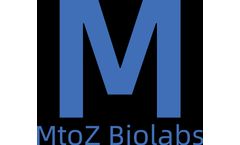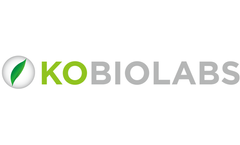Refine by
Dna Extracted Articles & Analysis
12 articles found
The structure of a fosmid consists of several key components: an origin of replication, a selectable marker (usually an antibiotic resistance gene), and cloned DNA fragments. The combination of these elements allows for the maintenance and propagation of large DNA inserts within host cells. Construction Process The process of constructing a fosmid library begins ...
This abundance makes egg white extraction the most common method for industrial lysozyme production. For large-scale applications, recombinant DNA technology has been employed to produce highly pure lysozyme for research and commercial purposes. ...
This technology identifies the diversity and specificity of T cells by measuring the sequences of the rearrangement regions of the TCRβ chain or α chain genes.(1) Sample Preparation: Total RNA or DNA is extracted from blood, tissue, or other samples enriched with immune cells.(2) Amplification: PCR amplification is performed using specific primers for multiple ...
Applications in the Biotechnology Industry DNA Extraction: Native Porcine Pancreatin's protease enzymes are crucial in biotechnology for DNA extraction. They break down proteins, easing the isolation of DNA from cellular or tissue samples. Cell Culture: In cell culture processes, Native Porcine Pancreatin is ...
The process of 16S/18S/ITS amplicon sequencing entails DNA extraction from environmental samples, careful selection of universal primers to amplify the target region of 16S/18S/ITS, and the subsequent detection of sequence variations and abundance in the target region. ...
The TCR-Seq service provides several advantages: First, CD Genomics efficiently extracts DNA or RNA and uses the Illumina platform for high-throughput sequencing, ensuring the quality and reliability of the data. ...
Targeted metagenomics involves a process that primarily chooses a type of MGE before sequencing, as opposed to whole metagenomic techniques where all DNA extracts are sequenced. 16S rRNA gene sequencing is an accurate technique for questioning the taxonomic concentration of bacterial diversity. ...
The understanding of microorganisms remains at the stage of morphological observation, description, classification, and physiology. 2) The second stage: Beginning in the 1980s, the development of molecular biology technologies such as BIOLOG technology, phospholipid fatty acid method, DNA fingerprinting, gene chip, etc., realized the direct analysis of environmental ...
a) It is worth noting that during the development of technologies such as DNA fingerprinting, the first generation of sequencing technology, namely Sanger sequencing, has also emerged. Handelsman et al. (1998) from the University of Wisconsin proposed the concept of metagenomics for the first time, whose research object is total DNA in a specific environment. The ...
All experiments were performed in accordance with relevant guidelines and regulations. DNA extraction and 16S rRNA sequencing analysis Total genomic DNA was extracted from vaginal swabs using a PowerSoil® DNA Isolation Kit (MO BIO Laboratories, Inc., Carlsbad, CA, USA) according to the manufacturer’s ...
The first step in performing molecular diagnostics on wood-decay fungi is to obtain analyzable fungal DNA. Five commercially available kits and one CTAB method were tested and analyzed in order to determine effective methods for extracting DNA from field samples. ...
The virus particles were recovered by glass wool filtration with elution using beef extract. DNA and RNA viruses were detected by the real time quantitative polymerase chain reaction (qPCR) and the reverse transcription-qPCR (RT-qPCR), respectively. ...








